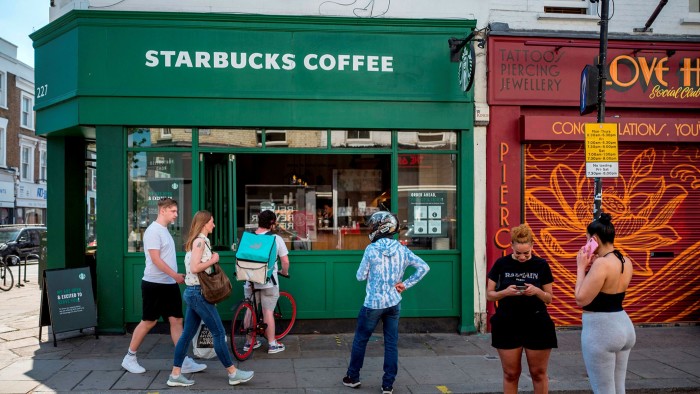To make bright ideas bigger you need cash and vision


Simply sign up to the Work & Careers myFT Digest -- delivered directly to your inbox.
Notoriously, money can’t buy you love. Can it buy you ideas?
Clever cash allocation is one reason for Amazon’s success in innovation, or “invention” as Jeff Bezos called it when heralding his transition from chief executive to executive chair.
True to Bezos’s 1997 promise to investors, Amazon has reinvested income to experiment incessantly, to create new lines of business, including Amazon Web Services and the voice-controlled Echo, and to develop novel ways of making and distributing goods.
According to a new study entitled “The Power of Diversification”, the addition of new business segments is itself a good measure of innovation. The correlation with Amazon, which the study highlights, is clear. After crunching data from some 1,800 annual reports from US and European companies, Stryber, an innovation consultancy, concluded that diversifying companies returned more to shareholders than the non-diversifiers that stuck to their knitting.
I think the study raises more questions than it answers — but they are interesting questions.
One is whether reporting a new business line is a reliable proxy for innovation. By the time a business is significant enough to appear in the annual report, it must already be reasonably mature, Professor Melissa Schilling of New York University’s Stern School of Business told me. What is more, chief executives can rearrange and reclassify business segments at will, to highlight success or obscure failure. Schilling favours new product announcements and patent filings as a better way of tracking true innovation earlier in the pipeline.
A second concern is that the study includes new business lines that companies have simply acquired.
I am not saying that innovative companies — or less inventive ones, for that matter — should never resort to deals. But as Alex Osterwalder and co-authors point out in their innovation manual The Invincible Company, acquisition is more often a way of plugging gaps in a company’s portfolio. Since 2013 Microsoft has bought GitHub, the code-sharing platform, LinkedIn, the business networking site, and — more pertinently — a couple of dozen cloud computing companies that help it compete with Amazon. According to The Invincible Company, deals are one way to help “exploit” existing businesses, by renovating, protecting, or scaling them up. At the same time, companies should “explore” novel ideas. Both exploitation and exploration are necessary for success.
It is true that combining a carefully chosen new acquisition with the acquirer’s existing culture can stimulate new ideas. Microsoft quickly became one of the biggest contributors to GitHub.
Acquisition, though, could also stifle innovation. A committee of the US Congress took Bezos to task last year over internal emails shedding light on Amazon’s 2010 price war with Quidsi, owner of the online nappy retailer Diapers.com, which it went on to buy.
Critics have used this as an example of a “killer acquisition”, intended to eliminate a potential rival, a claim Amazon would dispute. The net effect of such takeovers on future innovation is, in any case, hard to gauge. The purchase proceeds were reinvested by Quidsi’s owners in other ventures, for instance. But Amazon’s relentless expansion has allowed it to pursue other types of innovation.
In several areas, including its original target of bookselling, Bezos has been able to “take a business that isn’t actually new [and] scale it up and drive costs down to where it serves an entirely new market”, says Schilling.
Lack of capital is no barrier to innovation. Some constraints may even encourage it, as in the case of “jugaad” or frugal innovation. But it takes vision and money to create a new global market. Another example Schilling gives is Starbucks, which explored and then exploited the global potential of coffee houses that had existed for centuries. As mobster Tony Soprano’s sidekick Paulie remarks with disgust on visiting a Starbucks-style café in the 1999 crime drama The Sopranos: “How did we [Italians] miss out on this? Espresso, cappuccino — we invented this shit and all these other [guys] are getting rich off it.”
Two other ingredients lie behind Amazon’s success. One is its technique of placing plentiful small bets, systematically monitoring them, and regularly culling those that do not live up to expectations. The other is individual genius. Schilling, who profiled innovators from Marie Curie to Elon Musk in her 2018 book Quirky says they are easy to spot, but hard to nurture. “You show me an innovative person and I’ll show you a difficult person,” she says. It is to Amazon shareholders’ and customers’ benefit that its difficult but inventive founder won through to apply his ideas at scale.
Twitter: @andrewtghill
Comments